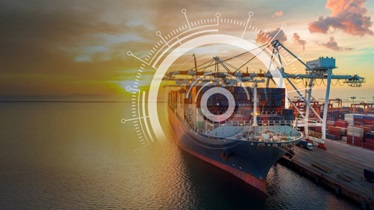Predictive Fleet Analytics is revolutionising supply chain management by giving reliable and accurate data you cannot find anywhere else. It is a cost-effective way to improve your vessel data and insight, helping to reducerisks to your operational efficiency and increase customer retention. Let’s explore Predictive Fleet Analytics in more detail below.
What is Predictive Fleet Analytics?
Predictive fleet analytics use trusted data combined with machine learning - to help shipping professionals make decisions before, during and after port operations. They can predict where ships will go, when they will get to the port and their berthing, turnaround, and departure times from a single interface. It incorporates both historical and real-time data, with proprietary machine learning algorithms to produce predictions in near-real time. that can be relied upon to make decisions confidently. When used in fleet operations, it will find patterns, risks and look for opportunities to improve logistics operational efficiency.
Why it’s needed
Some concerning statistics plague the shipping sector:
What’s the risk if you don’t have it?
So, what are the potential negative impacts of not knowing the estimated time of arrival (ETA) of vessels for stakeholders in the shipping industry? If you don’t know the ETA of your vessels it can put pressure on ports, hurt logistics and increase costs. Chances are port operators are making their scheduling and routing decisions based on pure guesswork andnd this can lead to increased fuel use and higher operating costs. Plus, they might struggle to manage their vessel traffic well, which can lead to delays, congestion in the waterways and lower overall port productivity. Add to it that your customers won’t know for sure when their shipments will arrive, and this causes issues in their supply chain and damage their businesses. As such, they’ll probably look for suppliers who can offer them better tracking and with that peace of mind.
What Predictive Fleet Analytics can do
Predictive Fleet Analytics is changing the game. It uses real-time data collected from over 3,000 sources resulting in over 327 million Automatic Identification System vessel positions monthly. That means the AI, ML and analytics functions are based on fact, not hunches or anecdotal evidence. As such, it provides more accurate ETAs and congestion estimations than ever before. And the service provided by Lloyd's List Intelligence is the only platform to include ETBs and ETDs within one single data environment, optimising the use of vessels, fuel, port facilities, port services and teams to save operators time and money.
If you're interested in learning more about this technology and finding out how we can help you retain more customers, streamline your operations, and cut costs, contact us.
.jpeg?h=210&w=402&la=en-US&hash=2CE0F1A9D9DA5355961B210F9C22552D)
Accurately predicting vessel arrival, berthing and departure times aids operations, helps boost sales, and increases supply chain efficiency.

Access a new level of reliable and accurate voyage data. Predictive Fleet Analytics saves you time, money and resource by enabling you to accurately track vessels, predict vessel movements, and anticipate port congestion and delays in minutes.